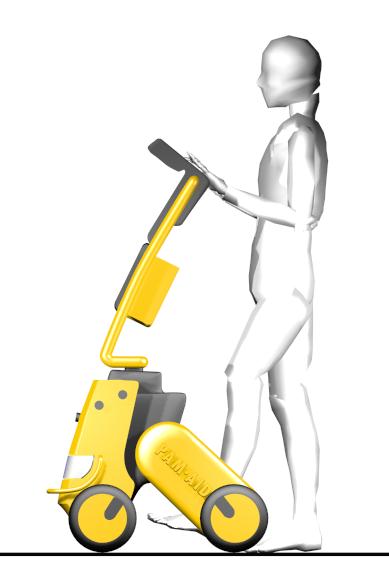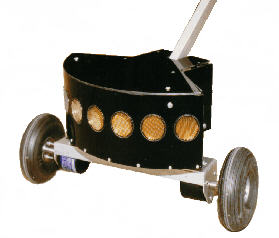
MOBILITY SYSTEMS:

MoBIC
(MOBILITY OF BLIND AND ELDERLY PEOPLE INTERACTING WITH COMPUTERS) (1995):
-
Does not provide obstacle detection.
-
Orientation and navigation aid through the use of
GPS.
-
Consists of two parts:
-
MoPS (Mobile Pre-Journey System):
-
Helps a user plan a journey (obtains map information,
bus/train schedulles etc.)
-
Provides data specific to the blind traveller.
-
MoODS (Mobile Outdoor System):
-
Guides the user toward their destination using GPS
and ellectronic compass.
-
User can ask questions, for example "where am I',
through a hand held keyboard-like device.

PAM-AID
(PERSONAL ADAPTIVE MOBILITY FOR FRAIL AND ELDERLY BLIND PEOPLE): TELEMATICS
APPLICATION PROGRAM (JAN. 97 - PRESENT):
-
Makes use of technnology from industrial automation.
-
The objective of PAM-AID is to allow users to retain
their personal autonomy.
-
Supports three modes of operation:
-
HUMAN CONTROL:
-
Issues warnings when an obstacle is detected and
intervenes if there is severe danger.
-
UNSUPERVISED CONTROL:
-
The system navigates unsupervised avoiding obstacles.
-
SHARED CONTROL:
-
System makes small adjustments to minimise the risk
of a collision.
 GUIDECANE
(Guidance Device for the Blind):
GUIDECANE
(Guidance Device for the Blind):
-
An array of ultrasonic obstacle-sensors attached
to a wheeled handle or cane.
-
The user selects a direction of travel by using a
joystick on the cane and then pushes the cane forward. The user can
then turn right or left moving the joystick in the respective location.
-
When the sensors detect an obstacle, the best path
around the obstacle is determined and the wheeels are turned accordingly.
Through the cane the user feels the change of direction and follows.
Once the obstacle is passed, the cane brings the user back to the desired
direction of travel
-
Uses an on-board 25MHz 486 PC.
-
Weighs only 4kg.
-
Contains 10 ultrasonic sensors capable of sensing
any obstacles within 120o.
Part of the above description was reprinted from IEEE Spectrum October
1997.
STRIDER
- A Talking Portable Navigation System: (by Arkenstone)
-
Addresses the transportation needs of the visually
impaired.
-
Consists of a Global Positioning System (GPS) and
Differential GPS receivers which plug into a notebook computer.
-
The GPS receivers provide lthe system with the user's
latitude and longitude positions which after processing, the location of
the user is conveyed to the user through software speech.
-
Currently a proto-type (packaged in a backpack),
has been developped.





 GUIDECANE
(Guidance Device for the Blind):
GUIDECANE
(Guidance Device for the Blind):
![]()